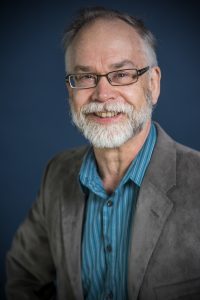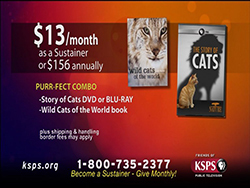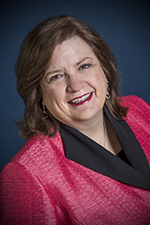Instead of pledge breaks, KSPS focuses on sustainer breaks—with exciting results

Instead of pledge breaks, KSPS focuses on sustainer breaks—with exciting results
“We switched from producing pledge breaks to producing sustainer breaks. That’s the mental switch we did, and the results were crystal clear.”
The Challenge
In January of 2017, PBS launched the Sustainer Growth Initiative (SGI), a year-long, hands-on approach that follows best practices recommended through the PBS Sustainer Learning Center. The SGI hoped to show new growth from individual station donors—especially monthly donors—in 10 individual sustainer programs, hoping to translate those findings to other stations in the future. One of those stations in this initial test group was KSPS-TV in Spokane, Washington.

“When the Initiative came out, I got into it wholeheartedly,” says producer/director Bob Lawrence, who handles the on-air messaging and helped implement it during pledge events. “The whole pledge break is a sustainer break, and we run pre-produced spots around the idea of sustainers.” Dawn Bayman, director of development at KSPS, agrees that the new strategy has been helpful. “Thanks to the messaging ideas that we got from SGI, all of our communication—whether it’s a printed piece or email or on-air—has that cohesiveness we were lacking before,” she says.
After testing the new messaging during the March drive’s live programming, KSPS saw an uptick in the number of sustainers above any previous pledge events. But the station encountered a challenge when June pledge arrived. “As with most summer drives, we probably had 85 percent of pledge breaks already produced,” she says. The summer months typically bring these scheduling difficulties, from a lack of new programs to the unavailability of hosts to do live production. Lacking that programming, how could KSPS apply the sustainer-specific messaging into the June breaks?
The Solution
Bayman and Lawrence came up with an idea. Instead of the usual two-minute opt-out at the end of each break, they divided the sustainer spot leading into and out of national pledge breaks. “We busted it up,” says Bayman. “Going into a pre-produced pledge event, we split it up with a very focused, very local sustainer message.” Lawrence explains that the 30-second spot going into the program featured an on-camera host. “They got a face and a name, and it was highly focused pertaining to the program’s sustainer message,” he says.
At the end of that pledge event break, KSPS followed up with another local sustainer message. “Then we went back to the show,” says Bayman.

In terms of results, the local approach proved effective. Though giving for the June drive was down overall, Sustainers proved to be a bright spot. “Of the 16 shows that pledged above-average for sustainer percentage, five of them had live local breaks. Six of them were pledge events with those added, local sustainer messages,” Bayman says. While the overall Sustainer acquisition average during June pledge was 24 percent, that amount jumped to 45 percent on shows featuring the live, local messaging. All in all, 31 percent of new members joined as Sustainers during the campaign.
Making the Switch
What was driving the success? Bayman identifies two primary factors. “First, there’s the local connection,” she says. “Oftentimes, they’re seeing a face they’re familiar with. Number two was setting up the entire pledge break as being geared toward sustainers.” This was especially important given the age of the pledge programming. “Sustainer messaging has been evolving from PBS and other sources since 2014, but sometimes we’re running pledge events that weren’t done in the last year,” Bayman explains. “They don’t have the latest, greatest sustainer messaging. This has allowed us to put the life back into those things.”

Lawrence says the new, local sustainer messaging even helped live talent during pledge events. “Our hosts really embraced that,” he says. “It gives them a more focused message.” KSPS hosts typically work without scripts or prompts. “It’s all ad-libbed. We have a really good cadre of hosts who love the station and our specific programs and they articulate it really well. This really helped them sharpen their approach,” Lawrence says. During these events, KSPS also changed its phone number bar and thank-you gift graphics so they focus on sustainers first.
Those changes appeared on screen and in front of the camera. Behind the scenes, Lawrence says it was vital for master control to play a significant role in the planning because KSPS is so highly automated. “We totally flip-flopped the way we do opt-outs,” he says. “This was a new wrinkle.”
“Automation is fantastic, but it takes your flexibility away,” adds Bayman. “You have to have the planning for it way up front so everyone understands how this is going to work.”

With this successful test behind them, what is KSPS planning in the future? “We’re going to do this a lot more!” Lawrence says, laughing. Bayman echoes his excitement. “The results were so clear that we’re going to do it in every single pledge event [moving forward]. We’re also going to do more local breaks,” she says. “In our brains, we switched from producing pledge breaks to producing sustainer breaks. That’s the mental switch we did, and the results were crystal clear.”
Questions? Tracy Ferrier I Director I PBS Development Services or Dawn Bayman I Director of Development I KSPS
